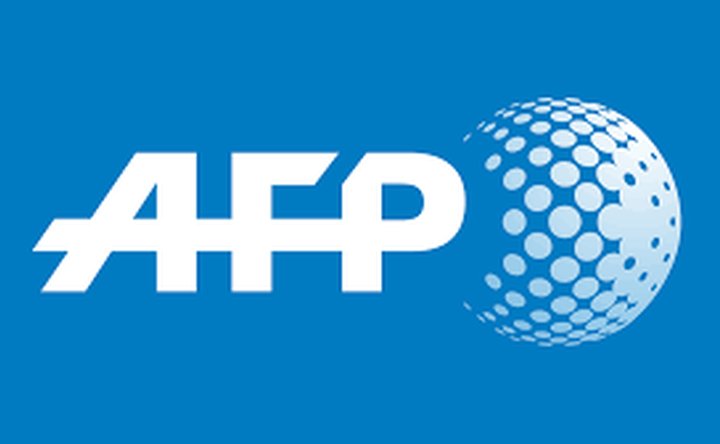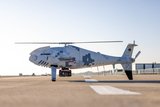US aircraft carrier arrives in Vietnam
A US aircraft carrier arrived in Vietnam 5 March for the first time since the end of the war, as the former foes bolster military ties in the face of Beijing's build-up in the disputed South China Sea.
The USS Carl Vinson will make a four-day port call to the central city of Danang for a highly symbolic trip that will include a visit to a centre for victims of Agent Orange, the toxic defoliant sprayed over large swathes of land by the US during the war.
But continuing tensions in the South China Sea loom over the trip as Beijing continues to build artificial islands capable of hosting military installations – much to the chagrin of Vietnam and other claimants to the sea.
Though the US is not a claimant to the resource-rich waterway, through which $5 trillion in trade passes annually, it has long lobbied for freedom of navigation there to counter China's growing influence.
The US and Vietnam have seen an extraordinary turnaround in relations since the end of the war in 1975.
Hailing the ‘dramatic progress’ in that relationship, US ambassador Daniel Kritenbrink said the visit underscored US commitment to the region and to Vietnam in particular.
Daniel Kritenbrink said: ‘The US and Vietnam share a range of interests including a desire to maintain peace, prosperity, unimpeded commerce, [and] freedom of navigation, upon which the region and its economies depend.’
Though US military ships have regularly docked in Vietnam in recent years, this is the first port call for an aircraft carrier. It will anchor just off Danang, where US Marines landed 53 years ago this month – the first direct involvement by American combat troops in the war.
Ties between the wartime enemies have warmed in recent years, especially under former US President Barack Obama, who in 2016 lifted a decades-old arms embargo.
President Donald Trump has insisted he will remain engaged in Asia, but his strategy has been led by his ‘America First’ clarion call, insisting that Vietnam buy more military equipment from America and reduce its yawning trade deficit.
One of Trump's first acts in office was withdrawing from the 12-member Trans-Pacific Partnership trade pact, from which Vietnam stood to gain enormously.
Analysts say the port call, which follows a visit to the Philippines in February 2018, is a chance for the US to flex its military muscle in Asia.
Carl Thayer, a Vietnam expert, told AFP ahead of the trip: ‘It's a US push... to demonstrate a massive naval presence in the South China Sea area to China, that the US is staying engaged.’
US officials refused to be drawn on the tensions with China on 5 March, insisting the trip was a routine deployment to the Western Pacific.
Rear Admiral John Fuller, commander of the USS Carl Vinson strike group, said: ‘In terms of our mission, it's the same thing that the mission has always been, of promoting peace and prosperity and stability in the region. I'm not going to speak specifically to China.’
Compared to the 11 active aircraft carriers in the US Navy, China currently boasts just one. But it has made no secret of its desire to build up its naval forces and become much more regionally assertive.
Vietnam remains the most vocal claimant in the South China Sea dispute as the Philippines has backed off under China-friendly President Rodrigo Duterte. Taiwan, Malaysia and Brunei also have claims.
More from Naval Warfare
-
![BMT and DNV partner to meet Australia’s heavy landing craft requirement]()
BMT and DNV partner to meet Australia’s heavy landing craft requirement
Under Project Land 8710 Phase 2, Australia has been seeking to acquire an undisclosed number of Littoral Manoeuvre Vessels to replace the Balikpapan-class. The programme has an estimated value of AU$1.4 billion (US$910 million), with IOC slated for 2032.
-
![Babcock to take over upkeep of Royal Navy Type-23 frigates]()
Babcock to take over upkeep of Royal Navy Type-23 frigates
The Royal Navy’s Type-23 Duke-class frigates for the UK Royal Navy were designed as anti-submarine warfare (ASW) ships but now have a multi-role function. Of the 16 Type 23s built, 12 remain in service with the Royal Navy and will be replaced by the Type-26 frigates before 2035.
-
![Austal completes autonomy trials with former Royal Australian Navy patrol boat]()
Austal completes autonomy trials with former Royal Australian Navy patrol boat
The work took place under the Patrol Boat Autonomy Trial (PBAT), which has been a collaboration between Austal, Greenroom Robotics, the Trusted Autonomous Systems Defence Cooperative Research Centre and the Royal Australian Navy’s (RAN) Warfare Innovation Navy Branch.
-
![Singapore launches fourth and final Type 218SG submarine]()
Singapore launches fourth and final Type 218SG submarine
The era of southeast Asian submarine modernisation has been in full swing fuelled by growing tensions in the South China Sea.
-
![Keel laid for third Hellenic Navy frigate as harbour trials start for first]()
Keel laid for third Hellenic Navy frigate as harbour trials start for first
On 24 March 2022, Greece and Naval Group have signed a contract for three defence and intervention (FDI) frigates. Two warships will be due for delivery in 2025 and the third expected the following year, with the deal including an option to add a fourth frigate to be ready in 2027.
























